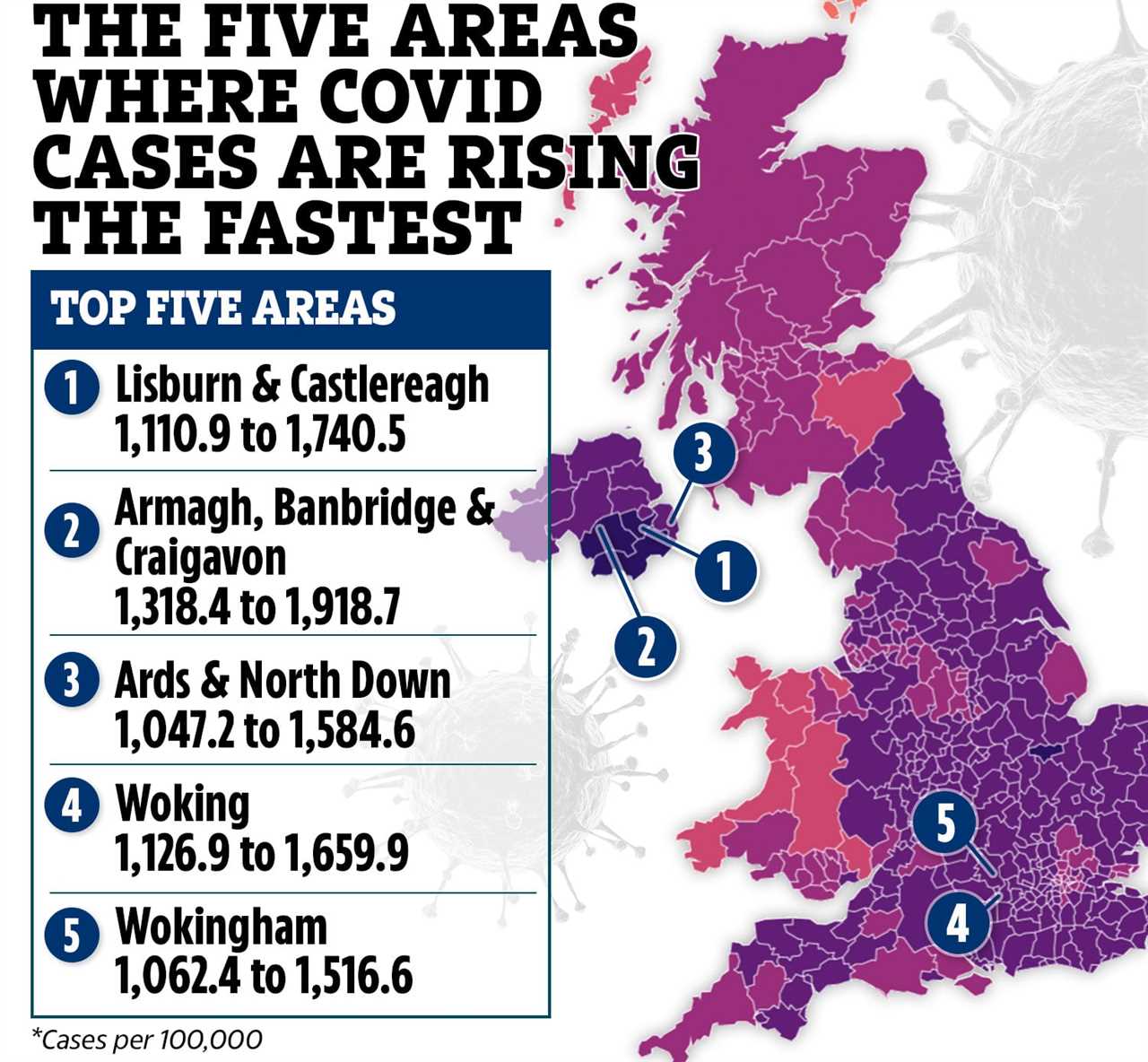CASES of Omicron are still rising in 218 places across the UK and this interactive map reveals if your local area is on the list.
Infections have continued to fall in the last two weeks, dropping 11 per cent since the middle of January.
In general, cases have risen in the last few days and experts have said this could be down to kids going back to school and mixing.
While cases have risen in 218 areas in the seven days to January 23, rates have fallen in 158 areas.
Most people who are catching the Omicron variant are suffering with cold-like symptoms and the bug seems to be milder for most people.
A string of positive studies show Omicron is milder than other strains, especially in the vaccinated.
Covid booster jabs protect against Omicron and offer the best chance to get through the pandemic, health officials have repeatedly said.
Newry, Mourne & Down in Northern Ireland continues to have the highest rate of infections in the UK, with 3,552 new cases in the seven days to January 23 – the equivalent of 1,955.2 per 100,000 people.
This is up from a rate of 1,522.5 for the seven days to January 16.
Armagh City, Banbridge & Craigavon in Northern Ireland has the second highest rate, up from 1,318.4 to 1,918.7, with 4,168 new cases.

Follow our Covid live blog for all the latest updates
Peterborough in Cambridgeshire has the third highest rate, up from 1,522.0 to 1,787.5, with 3,622 new cases.
Newport has the highest rate in Wales (866.7, up from 652.6) and Clackmannanshire has the highest rate in Scotland (588.8, down from 674.6).
While these are the areas where infection rates are the highest, there are five areas in the UK where cases have seen a large increase in the last week.
The top three areas are all in Northern Ireland, but experts have however have said that Northern Ireland has passed its peak of Omicron infections.
Northern Ireland had previously closed night clubs due to worries surrounding the spread of Omicron.
On Wednesday nightclubs reopened and dancing and indoor standing events were able to resume.







